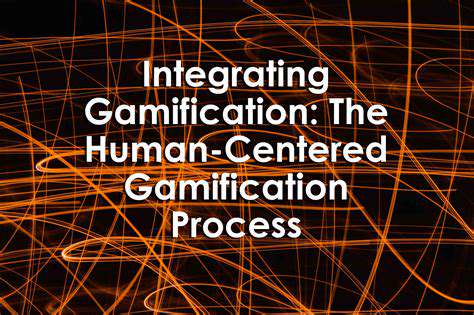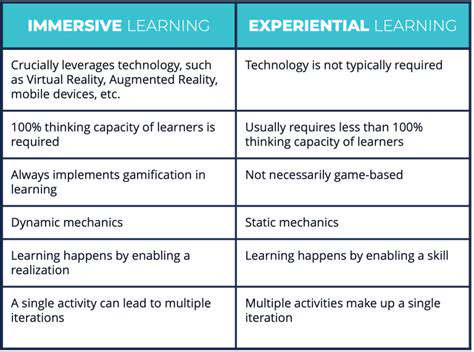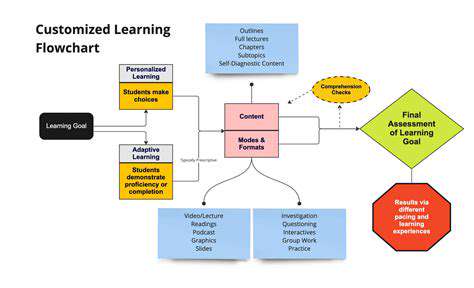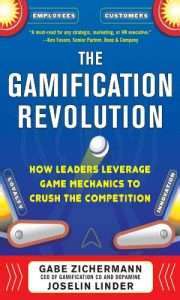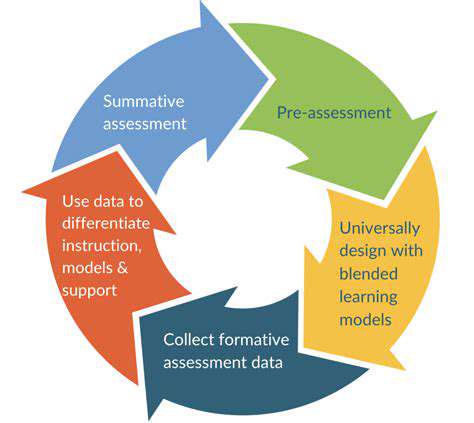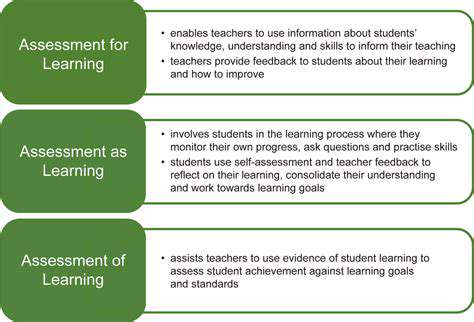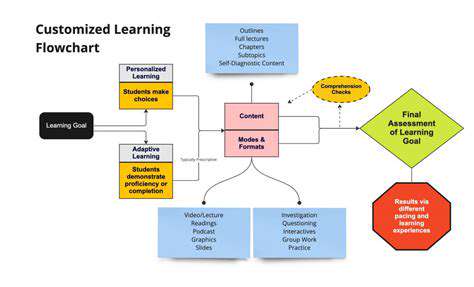Best Practices for Integrating Immersive Learning into Curriculum
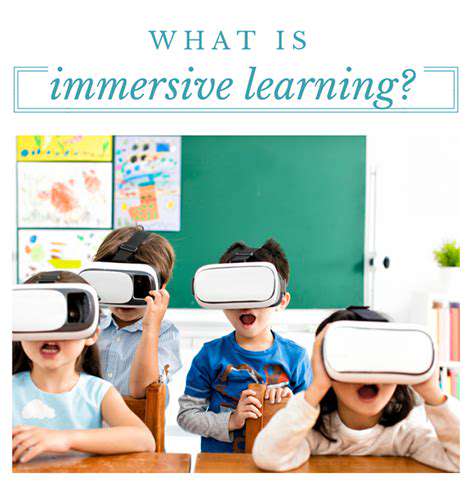
Crafting Learning Objectives Aligned with Immersive Experiences
Defining Clear Learning Outcomes
Effective learning objectives, especially when paired with immersive experiences, need to be clearly defined and measurable. They should articulate what specific knowledge, skills, or attitudes learners will demonstrate after engaging with the experience. This clarity is crucial for ensuring the experience aligns with the desired learning outcomes, allowing for effective assessment of the program's impact. Ambiguous objectives can lead to a lack of focus and ultimately, wasted learning opportunities. Think about the measurable behaviors you want learners to exhibit—that's the key to powerful objectives.
For example, instead of a vague objective like understand the principles of sustainable agriculture, a more effective objective would be learners will be able to identify and explain three key principles of sustainable agriculture, and apply them to a case study scenario, achieving a 75% accuracy score on the assessment. This level of specificity guides the design and evaluation of the immersive experience, ensuring it directly addresses the desired learning outcomes.
Connecting Objectives to Immersive Elements
The design of immersive experiences should be deeply intertwined with the learning objectives. Each interactive element, simulation, or scenario should directly contribute to achieving those objectives. A well-designed immersive environment allows learners to actively engage with the material in a way that promotes deeper understanding and retention. Consider how the experience will challenge learners, encourage critical thinking, and foster a sense of ownership over the learning process. This connection is vital for optimizing the learning experience.
For instance, a learning objective focused on problem-solving within a simulated business environment requires the immersive experience to present realistic challenges and offer opportunities for learners to develop and implement solutions. The experience should not merely present information; it should actively engage the learner in applying that information to real-world scenarios. This practical application is critical for translating knowledge into actionable skills.
Adapting Objectives for Diverse Learners
Immersive experiences should be designed with a variety of learning styles and needs in mind. Learning objectives need to be adaptable to accommodate different learning preferences. Different learners may grasp concepts at varying paces, and the experience should provide multiple avenues for engagement and understanding. Consider the diverse backgrounds and experiences within your target audience and ensure the immersive elements cater to their needs. This approach creates a more inclusive and impactful learning environment for everyone involved.
For example, a learning objective focusing on complex data analysis could be supported by a variety of interactive tools and methods, catering to those who prefer visual representations, hands-on activities, or collaborative discussions. Offering options that cater to various learning styles will improve the overall effectiveness of the immersive experience.
Selecting Appropriate Immersive Technologies and Platforms

Choosing the Right Immersive Technologies
Selecting the appropriate immersive technology depends heavily on the specific application and desired outcome. Factors like budget, technical expertise, and the complexity of the envisioned experience are critical to consider. Understanding the nuances of each technology, such as VR, AR, and MR, is paramount. Different technologies offer distinct capabilities and limitations, influencing the design and implementation of the project. For instance, virtual reality (VR) excels in creating fully immersive, self-contained environments, while augmented reality (AR) overlays digital information onto the real world, offering a unique blend of reality and virtuality. Careful consideration must be given to the level of immersion needed to achieve the desired impact and user engagement.
The target audience plays a significant role in the selection process. Different demographics may react differently to varying degrees of immersion. Factors such as age, technical literacy, and prior exposure to immersive technologies need to be carefully considered. A tailored approach that considers user preferences and expectations is crucial for successful implementation. For example, a training simulation may benefit from a higher degree of immersion, while a simple interactive experience might require less immersion. Therefore, careful planning and analysis are essential to ensure the chosen technology aligns with the audience's needs and expectations.
Factors Influencing Immersive Technology Selection
Several key factors influence the decision-making process when selecting immersive technologies. These factors encompass both technical and practical considerations, ranging from the desired level of interactivity to the overall project budget. The complexity of the envisioned experience and the required level of detail are crucial in determining the appropriate technology. For instance, a simple product demonstration might not necessitate the high level of realism offered by high-end VR headsets, whereas a sophisticated surgical training program would likely benefit from the high-fidelity visuals and precise controls provided by cutting-edge VR systems. Understanding the technical infrastructure required for each technology is also essential.
Cost is a major factor, with various technologies and associated equipment having different price points. Considerations should also be given to the available technical expertise within the team. Implementing and maintaining complex immersive systems requires specialized skills. The availability of skilled personnel is crucial to ensure effective project execution and avoid potential roadblocks. Project scope and timeline are integral components to factor in. A project with a limited budget and tight schedule may necessitate a less complex and more readily available technology solution. Careful planning and realistic timelines are crucial in navigating the complexities of immersive technology projects.
Furthermore, the desired level of user interaction and feedback is a vital aspect to consider. The chosen technology should facilitate seamless and intuitive user interaction. This aspect is essential for creating an engaging and effective experience. Different immersive technologies offer varying degrees of interactivity. For instance, some technologies allow for more sophisticated user input, while others may focus on passive viewing experiences. Careful evaluation of user interaction is essential for optimizing the overall user experience.
The specific goals and objectives of the project are paramount. The selection of the appropriate technology should align precisely with the desired outcome. For example, if the goal is to train users on complex procedures, a highly immersive VR environment may be the most suitable choice. Different technologies provide unique capabilities and features. Understanding these differences is essential for selecting the appropriate technology that best meets the project's specific needs.
Designing Engaging and Interactive Immersive Experiences
Understanding the User's Journey
A crucial element in designing immersive experiences is a deep understanding of the user's journey. This involves more than just knowing what actions a user takes; it's about grasping their motivations, expectations, and emotional responses throughout the interaction. Careful consideration of the user's emotional state and how the experience can effectively elicit desired responses, like excitement, curiosity, or even relaxation, is paramount. Analyzing user data to identify pain points and areas for improvement in the user experience is essential for creating a truly engaging journey.
Mapping out the user's journey from initial engagement to final interaction helps identify potential friction points and areas where the experience might fall short of expectations. Understanding these points allows designers to proactively address potential issues, leading to a more seamless and satisfying overall experience. This proactive approach ensures the user's journey is not only smooth but also deeply satisfying.
Leveraging Technology for Immersive Experiences
Modern technology offers a wide array of tools to create truly immersive experiences. Virtual Reality (VR) and Augmented Reality (AR) are powerful mediums capable of transporting users to completely new environments. However, effective integration of these technologies requires careful consideration of the user's comfort levels and potential limitations. Understanding how to effectively integrate these technologies, taking into account the user's needs and limitations, is key to a successful immersive experience.
3D modeling and animation techniques can bring interactive environments to life, enabling users to explore and interact with virtual spaces in unprecedented ways. Careful attention to detail, realism, and intuitive controls is essential to avoid overwhelming the user and ensure an enjoyable and engaging experience.
Creating Compelling Narratives
Immersive experiences are more than just visuals; they often involve compelling narratives that draw the user in and keep them engaged. A well-crafted narrative, whether through storytelling, interactive elements, or a combination of both, can create a memorable and meaningful experience for the user. This narrative should be thoughtfully woven into the design to enhance the overall emotional impact and memorability.
Understanding the target audience and their preferences for storytelling is critical to crafting a narrative that resonates with them. This understanding allows for a personalized experience that speaks directly to the user's interests and values. Careful consideration of plot development, character arcs, and emotional pacing is essential for creating a compelling narrative that drives user engagement.
Designing Intuitive User Interfaces
A critical component of any immersive experience is the user interface (UI). A well-designed UI allows users to navigate and interact with the experience intuitively and seamlessly. Clear visual cues, intuitive controls, and a logical flow are essential to prevent frustration and encourage exploration. Navigation needs to be simple and straightforward; users should not be overwhelmed by complex menus or obscure controls.
Integrating Sensory Feedback
Beyond visual and auditory elements, immersive experiences should incorporate other senses to create a truly multi-sensory environment. Tactile feedback, haptic devices, and even environmental smells can all enhance the user's immersion and connection to the experience. Strategic use of multiple senses can create a more intense and unforgettable experience. Experimentation and user testing are essential for determining the most effective methods to integrate sensory feedback.
Evaluating and Iterating on Design
Thorough user testing and feedback collection are essential for continuous improvement of any immersive experience. Collecting user feedback at every stage allows for proactive adjustments to optimize the design. Observing user behavior, analyzing user data, and gathering qualitative feedback can provide valuable insights into what works and what needs improvement. This iterative process ensures that the final product meets the needs and expectations of the target audience, leading to a more engaging and rewarding experience.
Read more about Best Practices for Integrating Immersive Learning into Curriculum
Hot Recommendations
- The Gamified Parent Teacher Conference: Engaging Stakeholders
- Gamification in Education: Making Learning Irresistibly Fun
- The Future of School Libraries: AI for Personalized Recommendations
- EdTech and the Future of Creative Industries
- Empowering Student Choice: The Core of Personalized Learning
- Building Community in a Hybrid Learning Setting
- VR for Special Education: Tailored Immersive Experiences
- Measuring the True Value of EdTech: Beyond Adoption Rates
- Addressing Digital Divide in AI Educational Access
- Preparing the Workforce for AI Integration in Their Careers
